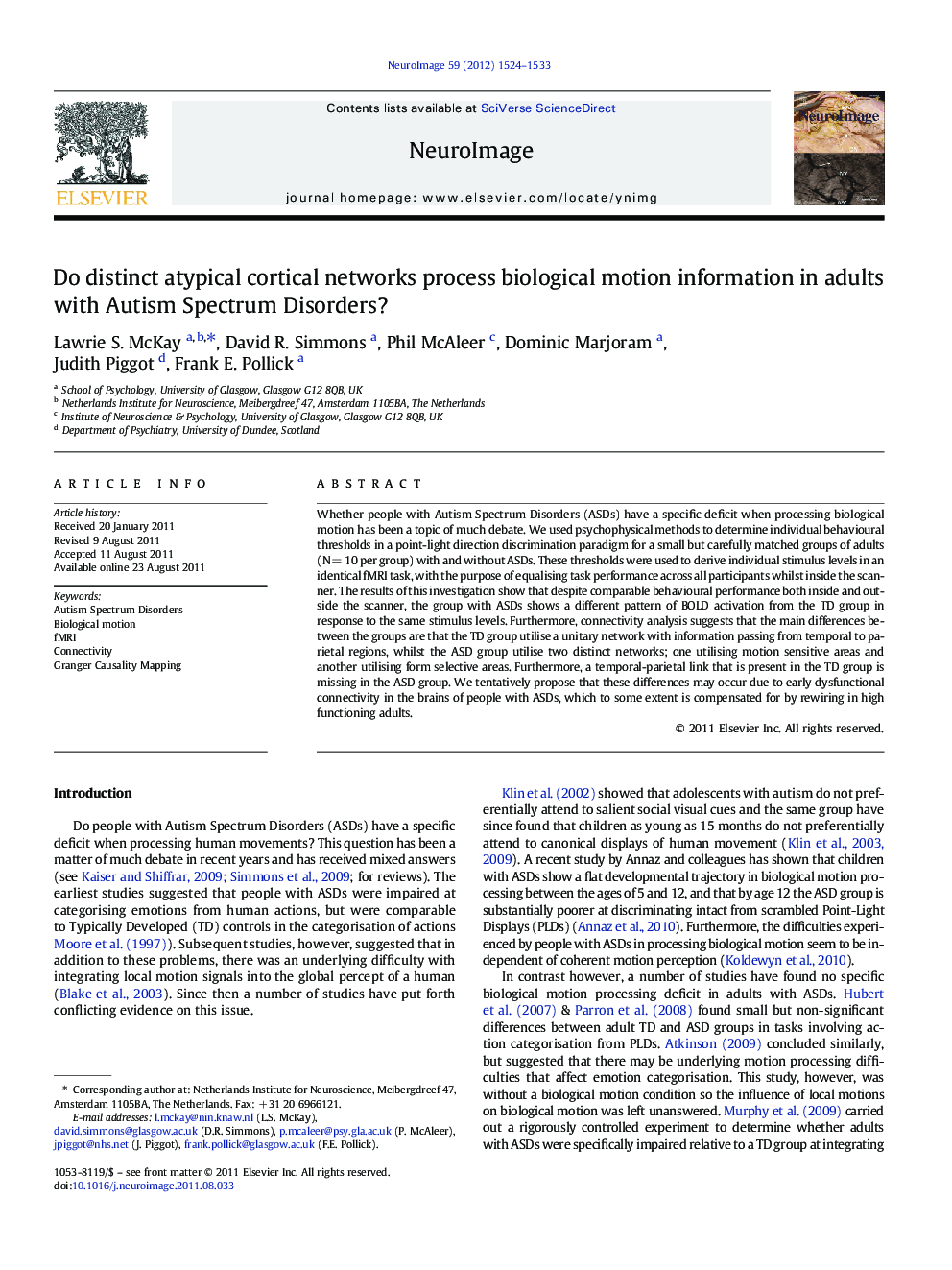| Article ID | Journal | Published Year | Pages | File Type |
|---|---|---|---|---|
| 6033301 | NeuroImage | 2012 | 10 Pages |
Whether people with Autism Spectrum Disorders (ASDs) have a specific deficit when processing biological motion has been a topic of much debate. We used psychophysical methods to determine individual behavioural thresholds in a point-light direction discrimination paradigm for a small but carefully matched groups of adults (NÂ =Â 10 per group) with and without ASDs. These thresholds were used to derive individual stimulus levels in an identical fMRI task, with the purpose of equalising task performance across all participants whilst inside the scanner. The results of this investigation show that despite comparable behavioural performance both inside and outside the scanner, the group with ASDs shows a different pattern of BOLD activation from the TD group in response to the same stimulus levels. Furthermore, connectivity analysis suggests that the main differences between the groups are that the TD group utilise a unitary network with information passing from temporal to parietal regions, whilst the ASD group utilise two distinct networks; one utilising motion sensitive areas and another utilising form selective areas. Furthermore, a temporal-parietal link that is present in the TD group is missing in the ASD group. We tentatively propose that these differences may occur due to early dysfunctional connectivity in the brains of people with ASDs, which to some extent is compensated for by rewiring in high functioning adults.
⺠ASD and TD adults show comparable performance in a simple biological motion task. ⺠ASD and TD groups activate different brain regions during task. ⺠ASD and TD groups show different patterns of effective connectivity during task. ⺠Results suggest that each group uses different brain networks to reach the same goal.
